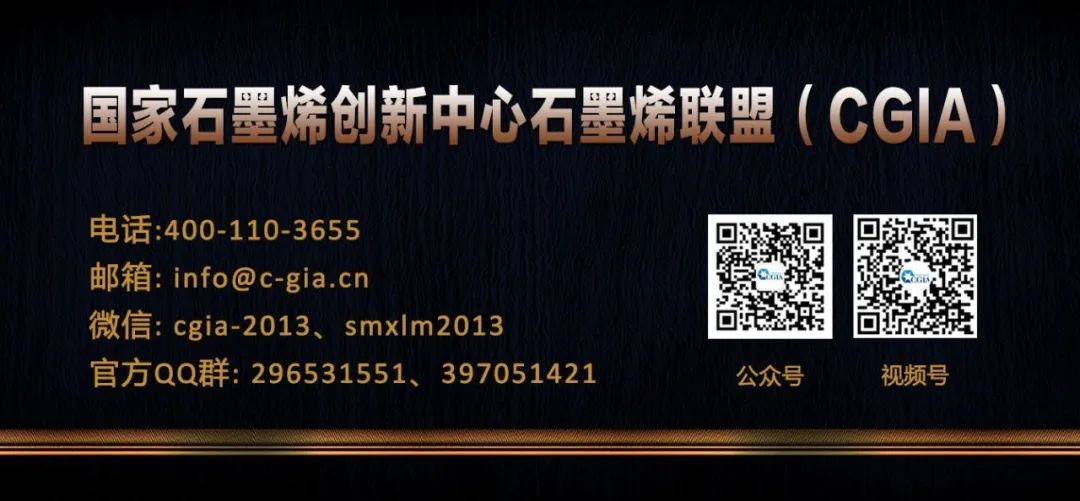↑ Click the “Graphene Alliance” above to follow us

First Author: Do Hoon Lee
Corresponding Author: Kuniharu Takei
Affiliation: Hokkaido University
DOI: 10.1021/acsnano.4c13156
Background Introduction
Laser-induced graphene (LIG) adopts a bottom-up approach, directly converting carbon precursors into porous three-dimensional graphene through laser irradiation. As a macroscopic, low-cost conductive material, LIG has enormous potential for both stretching and bending. Since LIG can be used as an active sensing material, further enhancing its performance is crucial for unlocking advanced applications utilizing cutting-edge technology. Since its discovery in 2014, significant progress has been made in developing flexible and stretchable strain sensors based on LIG. The reported studies can be categorized into four main areas based on the applied technology or materials used. These categories include (i) LIG composites—LIG with MoS2, HfSe2, black phosphorus, and MXene-Ti3C2Tx@EDOT; (ii) transfer methods—techniques such as low-temperature transfer that enhance the mechanical bonding between hydrogels and LIG, and water-assisted transfer of LIG that can enhance conductivity; (iii) formation of waveforms on LIG; and (iv) improved crystallinity of LIG—flash healing and laser texturing processes of LIG. Despite the diverse methods for producing LIG, the existing stretchable sensors based on LIG exhibit relatively low sensitivity to human skin, with an average strain coefficient (GF) of 182.3±93.7 at 10% strain. Compared to the strain values of skin stretching around joints, this sensitivity limitation becomes apparent, with approximately 10% when the elbow is bent at 15°, and about 2% when the wrist is bent. Therefore, increasing GF is essential for achieving accurate skin stretching measurements, which will aid in advancing the development of wearable devices based on LIG.
Highlights of This Work
1. This work demonstrates that using ZnO nanoparticles (NP) assisted photothermal enhancement in manufacturing LIG can significantly improve sensitivity.
2. A stretchable strain sensor with ultra-high sensitivity was fabricated by transferring the LIG formed on PI to polydimethylsiloxane, with a strain coefficient of 1214 at 10% strain, approximately 60 times higher than the strain coefficient without ZnO NP.
3. Utilizing the selective graphitization characteristics of LIG, a flexible double-sided integrated sensor sheet equipped with flexible strain and ultraviolet (UV) sensors was demonstrated. This sheet can simultaneously monitor the UV intensity and joint bending angles of motion-wearable devices.
4. The developed sensor was connected to a runner’s body to monitor and simulate the impacts of the forefoot and heel, thereby verifying the ultra-high sensitivity and long-term stability of the sensor without the need for a camera.
Image Analysis

Figure 1. Selective conversion of ZnO nanoparticles (NP) assisted laser-induced graphene (LIG). (a) The process of preparing selectively ZnO NP assisted LIG through irradiation with a CO2 laser at a wavelength of 10.6 μm. (b) Schematic and photo of LIG selectively converted into the shape of the university logo. Reproduced with permission from Hokkaido University 2024. (c) Optical image of selectively patterned LIG with ZnO NP assistance. (d) Raman spectra of LIG with and without ZnO NP. (e) Energy dispersive X-ray spectroscopy images showing the distribution of carbon, oxygen, and zinc in the selectively converted LIG; scale bar, 50 μm. (f) Critical flux (ϕcrit) required to convert each sample into LIG under different ZnO NP diameters and spin-coating speeds (i.e., ZnO NP thickness). (g) ϕcrit for PI coated with various average diameters (25 and 200 nm) of ZnO NP and without ZnO; ϕcrit is plotted on the left y-axis, and ZnO thickness is plotted on the right y-axis. (h) Infrared camera images. (i) Temperature change over time when a 50 mW laser is irradiated on a single point on the substrate, coated with and without ZnO NP (average diameter 25 nm) at 500 rpm.

Figure 2. Ultraviolet (UV) and bending strain sensors. (a) Manufacturing process of the double-sided sensor with a single-sided UV sensor (Sensor 1) and a bending strain sensor (Sensor 2) on the other side. (b) Optical microscope image of ZnO nanoparticles (NP) UV photodetector. (c) Current-voltage curves recorded under dark conditions and 1000 μW/cm2 UV irradiation. (d) Real-time optical response of ZnO NP photodetector under +10 V bias at 1000 μW/cm2 UV irradiance. (e) Response of the sensor under different UV intensities. (f) Optical microscope images of the bending strain sensor LIG formation process with 50, 100, and 200 μm laser scanning intervals. (g) Comparison of resistance change rate (ΔR/R0) values under strain with and without ZnO NP, and under different laser scanning intervals; thick lines represent bending values, and thin lines represent release values. (h) Real-time response under continuous strain application. (i) Long-term cycling test of the strain sensor conducted over more than 2000 cycles within a 0.32% strain range. The illustration highlights the sensor’s response at the beginning and end of the measurement. (j) Comparison of sensitivity and strain range between this study and previously reported sensors.

Figure 3. Stretchable laser-induced graphene (LIG) strain sensor. (a) Manufacturing process of the stretchable LIG strain sensor. (b) Photo of the polydimethylsiloxane (PDMS) film with the LIG layer embedded being peeled off. (c) Raman spectra of residual LIG on LIG-PDMS and polyimide (PI) films, with and without ZnO nanoparticles (NP). (d) Scanning electron microscope images of the LIG structure transferred to PDMS with and without ZnO NP. (e) Stretchable LIG dyed strain sensor. (f) Resistance change rate (ΔR/R0) as a function of strain applied to the sensor with and without ZnO NP and in different directions: PI films coated with ZnO NP in vertical and parallel strain directions along the laser scanning direction, and LIG without ZnO NP in the vertical direction. (g) Real-time monitoring under different strain applications. (h) Real-time monitoring under various cyclic strain applications. (i) Benchmark comparison of measurement factors and applied strain between this study and existing studies on stretchable strain sensors. (j) Long-term cycling test conducted up to 2000 cycles at 4% strain. The illustration highlights the sensor’s response at the beginning and end of the measurement. (k) Response and recovery time of the stretchable strain sensor.

Figure 4. Double-sided integrated ultraviolet (UV) and bending strain sensors. (a) Resistance change rate (ΔR/R0) as a function of compressive bending strain measured using the bending strain sensor. (b) ΔR/R0 as a function of strain measured under various UV intensities using the UV photodetector. (c) UV response of the sensor under different UV intensities at +10 V bias. (d) Photo of the double-sided integrated sensor; one side has the UV sensor and the other side has the bending strain sensor. (e) Real-time resistance changes of the double-sided sensor sheet under UV and bending strain applications, with data compensation for UV response.

Figure 5. Running posture monitoring. (a) Photo of the foot sensor. (b) Photos of two running postures: forefoot landing and heel landing. Real-time resistance change rates of three sensors during (c) forefoot landing run and (d) heel landing run. Animation of real-time data from the three sensors during running (e) forefoot landing and (f) heel landing.
Source: Flexible Sensors and Devices
▶▶ Recruitment of alliance members | Join hands to create the extraordinary!
▶▶ Recruitment of alliance council units | Unite and move forward for a win-win future~
▶▶ A letter to all graphene enthusiasts
▶▶ The Graphene Alliance (CGIA) long-term call for contributions on the “Material Strong Nation” topic by Xinhua News
▶▶ Precision advertising placement, making every budget worth it~
▶▶ Demand docking | Recent demand summary

Our Video Channel

“Graphene Alliance” Video Channel features the highly anticipated “X” material, surprise guest lectures, engaging science popularization videos, and even occasional “benefits”… Welcome everyoneto scan and follow our video channel, and gather a wealth of knowledge!

Our video channel
